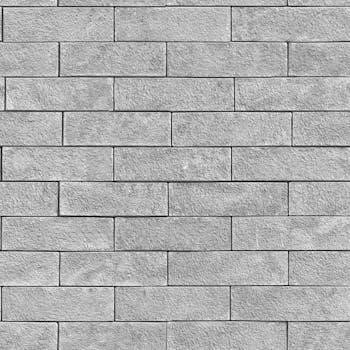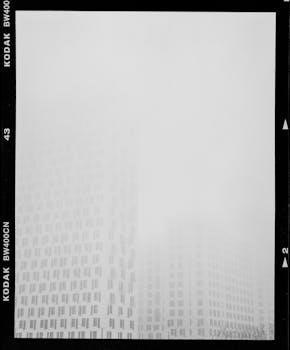
linear guide bearing block
Linear guide bearing blocks are crucial components in motion control, facilitating smooth and precise linear movement. These blocks, also known as carriages, travel along linear rails, supporting loads with minimal friction. They are essential for various industrial applications.
Understanding Linear Bearings
Linear bearings are fundamental to understanding linear guide bearing blocks. They are designed to enable smooth and precise linear motion, differing from rotary bearings which facilitate rotational movement. Various types exist, including recirculating ball bearings where balls roll and recirculate to allow continued motion. These bearings are integral to the functionality of linear guides, providing the means for low-friction movement along the rail. They are essential in numerous mechanical systems, from industrial machinery to everyday devices, playing a vital role in achieving accurate and controlled linear motion. The selection of the correct linear bearing type is crucial for performance.

Types of Linear Guides
Linear guides are categorized into sliding contact and rolling element types. These differ in how the bearing block moves along the rail. Selecting the correct type depends on the application’s specific needs.
Sliding Contact Linear Guides
Sliding contact linear guides, a primary type in motion control, operate through direct contact between the moving block and the guide rail. This design, unlike rolling element guides, relies on a sliding motion, often involving a low-friction material to minimize resistance. These guides are typically simpler in construction, making them cost-effective for certain applications. However, they generally exhibit higher friction and wear compared to rolling element alternatives, which can impact their lifespan and precision. They’re often chosen for less demanding applications where absolute precision and minimal friction aren’t paramount, and their simplicity offers a straightforward solution to linear motion. These types may require more lubrication.
Rolling Element Linear Guides
Rolling element linear guides represent a significant advancement in linear motion technology, utilizing rolling elements like balls or rollers to facilitate movement between the bearing block and the guide rail. This approach drastically reduces friction compared to sliding contact guides, resulting in smoother, more precise motion and increased efficiency. These guides are favored for applications demanding high accuracy, low friction, and minimal wear. The rolling elements, housed within the bearing block, recirculate as the block moves, allowing for continuous and consistent motion along the rail. This design is more complex than sliding guides, but the benefits in performance and longevity often justify their higher cost.
Key Components of Linear Guide Systems
Linear guide systems consist of two primary parts⁚ linear rails and bearing blocks (or carriages). The rails provide a track, while the blocks move along them, enabling precise linear motion.
Linear Rails
Linear rails are the foundational elements of linear guide systems, serving as the precision-engineered tracks upon which bearing blocks travel. Typically crafted from robust materials like stainless steel or aluminum, these rails come in various profiles, including square, round, and rectangular, to accommodate diverse loads and applications. The rail’s length is tailored to meet specific travel distance needs. They are designed to provide a rigid, stable path, ensuring the accurate and smooth movement of the bearing blocks. The selection of rail material and profile is crucial for the overall performance and longevity of the linear motion system. These rails are precision-ground for optimal performance.

Bearing Blocks (Carriages)
Bearing blocks, also known as carriages or sliders, are the movable components of a linear guide system. These blocks glide along the linear rails, housing the rolling elements and acting as a mounting platform for the loads being moved. They are designed to distribute weight evenly, accommodating a range of load capacities based on application needs. Carriages come in various configurations, like blocks or flange-style, and may incorporate features such as dust seals or wipers to protect the rails from contaminants. Their smooth and precise movement is vital for the accuracy and efficiency of the linear motion system. They are the critical part that interacts directly with the linear rail, ensuring the load is moved effectively.
Functionality of Linear Guide Bearing Blocks
Linear guide bearing blocks are designed to minimize friction during movement along the rails. They also ensure precise linear motion, supporting and guiding loads accurately and efficiently in various applications.
Reducing Friction
Linear guide bearing blocks are engineered to significantly reduce friction, a critical factor for efficient linear motion. They achieve this through the use of rolling elements, such as balls or rollers, which minimize the contact area between the block and the rail. This rolling motion replaces the sliding contact found in other systems, substantially decreasing resistance. The design promotes smooth movement and reduces wear, ensuring longevity. This results in reduced energy consumption and higher precision in movement, critical for many industrial applications requiring accurate and consistent motion. Proper lubrication further enhances this effect, further reducing friction and ensuring smooth operation.
Ensuring Precise Linear Motion
Linear guide bearing blocks are fundamental for ensuring precise linear motion. Their design allows for smooth and accurate movement along a defined path, minimizing deviations and maintaining consistent positioning. This precision is achieved through the use of high-quality materials and precise manufacturing processes. The blocks effectively guide the load, preventing unwanted lateral movements and ensuring that the load travels in a straight line. This is vital for applications requiring accuracy and repeatability. The rigid construction of the blocks, combined with the rolling elements, contributes to this precise motion, making them essential for demanding applications. They provide consistent and reliable performance.
Types of Rolling Elements in Linear Guides
Linear guides utilize rolling elements like ball and roller bearings to minimize friction. These elements enable smooth movement along the rails, crucial for precise linear motion in various applications.
Ball Bearings
Ball bearings are a common type of rolling element used in linear guides. They consist of small, hardened steel balls that circulate between the bearing block and the linear rail. These bearings are suitable for applications requiring high speed and low to moderate loads. The balls minimize friction by rolling rather than sliding, enabling smooth and efficient linear motion. They are widely used due to their versatility and ability to provide precise movement. Ball bearings are found in diverse applications, including 3D printers, medical devices, CNC machines, and various transportation systems. They are an essential component for achieving smooth and accurate linear movement.

Roller Bearings
Roller bearings, another type of rolling element used in linear guides, utilize cylindrical or tapered rollers instead of balls. These rollers offer a larger contact area, making them suitable for heavier loads and demanding applications. They are particularly effective in scenarios where radial loads are predominant. Roller bearings provide high load capacity and rigidity, ensuring stable and precise linear motion under significant weight. Compared to ball bearings, they are better suited for applications requiring robust support and resistance to high forces. This makes them a preferred choice in heavy machinery and industrial equipment where reliability under heavy loads is crucial.
Applications of Linear Guide Bearing Blocks
Linear guide bearing blocks are widely used in industrial machinery, CNC machining, and 3D printing. Their precision and low-friction movement make them ideal for these applications.
Industrial Machinery
In industrial machinery, linear guide bearing blocks play a vital role in ensuring smooth and accurate motion. They are used in a wide range of equipment, from heavy-duty manufacturing machines to automated assembly lines. These blocks facilitate the precise movement of components, enabling efficient and reliable operation. Their ability to handle substantial loads with minimal friction is crucial for maintaining productivity and reducing wear. The use of linear guides in industrial settings optimizes performance and extends the lifespan of the machinery by providing controlled and consistent motion, essential for tasks that demand accuracy and repeatability.
CNC Machining

In CNC machining, linear guide bearing blocks are fundamental for achieving the high precision and accuracy required. These blocks enable the precise movement of cutting tools and workpieces along linear axes, ensuring that parts are machined to exact specifications. The low friction and high rigidity of linear guides are essential for maintaining consistent and repeatable machining results. They allow CNC machines to perform complex operations with minimal vibration and play, contributing to the overall quality of the machined products. Their performance directly impacts the machine’s ability to follow programmed paths accurately, which is crucial in CNC machining.
3D Printing
In 3D printing, linear guide bearing blocks are critical for ensuring smooth and accurate movement of the print head or build platform. The precision of these blocks directly impacts the quality and resolution of the printed objects. They enable the print head to move along the X, Y, and Z axes with minimal vibration and backlash, which is essential for creating detailed and dimensionally accurate prints. The low friction characteristics of linear guides allow for fine movements, contributing to the layer-by-layer precision of the 3D printing process. They support the constant motion required for printing, ensuring consistent material deposition and accurate object formation.
Leave a Reply
You must be logged in to post a comment.